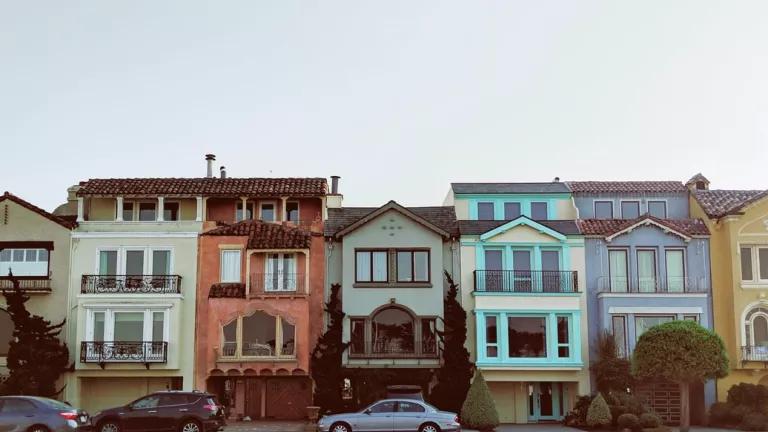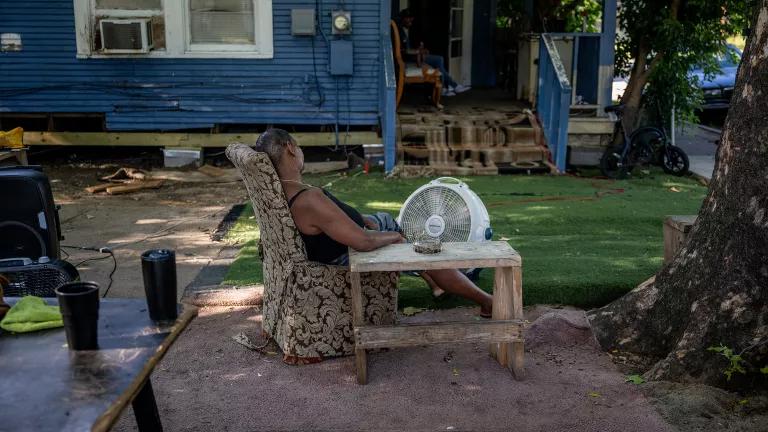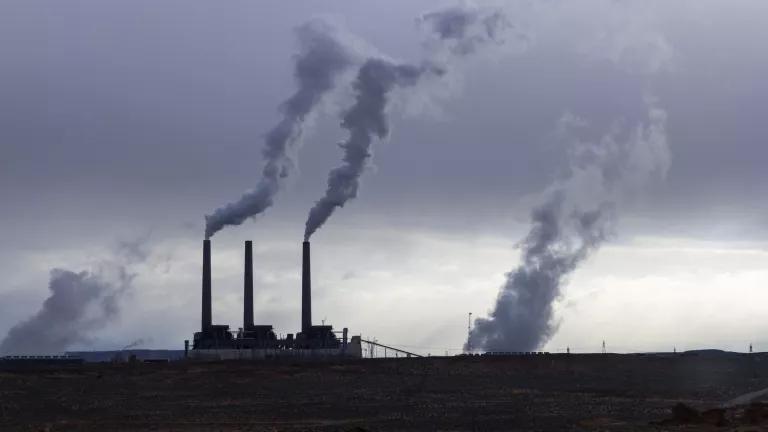What COVID Taught Us About Reliable Energy & Healthy Homes
The onset of the COVID-19 pandemic created the conditions for an economic, social, and public health crisis unlike anything seen in the last century, and with it continues to exacerbate issues caused by a deeply broken utility and housing system.

This blog is the first in a series of three by Schneider fellow Lizzie Avila on the topic of tenant and utility consumer protections before, during, and after the pandemic. You can read the second blog here and the third blog here.
The onset of the COVID-19 pandemic created the conditions for an economic, social, and public health crisis unlike anything seen in the last century, and with it continues to exacerbate issues caused by a deeply broken utility and housing system. The current state of the system is bleak: the housing sector, as of January 2021, estimates between $8.4 and $52.6 billion owed in back rent, and an estimated $35-40 billion is owed in utility bills. Black, Indigenous, People of Color, with already disproportionate energy burdens (up to 45% more burden than white households) and housing burdens (with more than 50% of Black households having Moderate to Severe cost burdens) bear the brunt of these costs, making this not only an affordability issue but an equity issue as well.
Pre-Pandemic Interventions
Before the pandemic, utility shut-offs and evictions were a routine response to customer & tenant nonpayment. Some protections against shut-offs and evictions included just cause eviction ordinances and rent stabilization for tenants, or seasonal shut-off moratoria for utility customers. Some states had rental assistance programs pre-pandemic that also aided households struggling to afford rent and utilities, albeit with less funding. These protections, however, were only available in some jurisdictions, and even then did not completely prevent utility disconnections and evictions and help to keep people in their homes and connected to energy. According to EvictionLab, there were 898,479 evictions enforced nationally in 2016 alone. The Utility Reform Network reports 886,000 households in California that experienced utility shutoffs in 2016—nearly as many shutoffs as there were evictions nationally, and this is just one state.
Government assistance to help with payment, such as LIHEAP or Housing Choice vouchers, also functioned as interventions pre-pandemic. But before COVID-19, LIHEAP only reached about 15% of eligible households and Housing Choice vouchers only reached about 24% of eligible households, both due to funding limitations, proving that they are not enough to completely address utility shutoffs and the housing crisis.
COVID-19 Response
At the onset of the COVID-19 pandemic, community organizers and policy advocates alike sprang into action to fight for comprehensive renter and utility consumer protections. Right To Counsel NYC created a guide that helped tenants form coalitions with their neighbors and organize rent strikes in over 50 buildings, the Regional Tenant Organizing Network in California shut down a courthouse in Santa Clara County to protest evictions, and 600 groups-- including the NRDC-- signed on to a letter urging President Joe Biden to institute a federal utility shutoff moratorium on his first day in office. The result of the organizing efforts of those all over the country was a national eviction moratorium, 38 state eviction moratoriums, and 33 state utility shutoff moratoriums. Many of these statewide utility shutoff moratoriums were short-lived or made voluntary after a few months. As of August 30th 2021, all but 6 states have lifted their utility shutoff moratoriums and all but 5 states have lifted their eviction moratoriums, despite still being in the middle of a pandemic. The federal eviction moratorium was officially struck down by the Supreme Court on the 26th after an attempt to extend it again through October 3rd. Some states, such as New York, have again extended their eviction moratoriums in response to this decision, although crucial parts of the legislature (such as being able to demonstrate financial hardship via electronic form instead of a court evidence submission) became blocked due to the ruling.
In addition to federal and statewide moratoriums, an additional $50 billion was allocated to distribute to state rental assistance programs in December 2020 and March 2021, designated by the Department of the Treasury as usable for both rent and utility payments. The distribution of this assistance has been overwhelmingly slow, with only $5.1 billion dollars distributed to renters as of July 2021, the rest still sitting in state accounts. Only 17% of those who have applied for this assistance have actually received funding, making this program comparably effective as affordability interventions before COVID-19, despite a significant budget increase. The hesitant and heavily-critical distribution process has had real consequences for renters and utility consumers, with an estimated 11 million households facing eviction and billions of dollars in utility arrearages that fall on the shoulders of consumers. These consequences disproportionately affect Black, Indigenous, and People of Color (BIPOC) households and low-income households. As of March 2021, 9% of white renters were behind on rent, and BIPOC were significantly more impacted—with 22% of Black renters, 20% of Latinx renters, and 19% of Asian renters being behind on rent in March 2021.
The Affordability Crisis Continues
At the beginning of the pandemic, staying at home and washing your hands was emphasized as one thing we could all do to keep healthy and safe. By creating policies like eviction and utility shutoff moratoriums during the pandemic with this reasoning, governments across the country proved and admitted that access to utilities and housing is a necessary component of public health. As vaccinations continue to be distributed and we move towards a hopeful end to the pandemic, policy-makers have an opportunity to push for bold legislature that builds upon the ideas of these moratoriums, that energy and housing are human rights and essential to wellbeing.
The reality of this energy and housing crisis is that while lockdowns and moratoriums may be ending, the pandemic continues on, with current hospitalization rates similar to those seen last winter. The number of households falling behind on rent and utility payments will only continue to increase. We need to pursue actions that immediately protect renters while simultaneously creating long-term policies to comprehensively address the housing crisis and energy justice.
Lizzie Avila is one of the summer 2021 Schneider Fellows at the NRDC working with Energy Efficiency for All in the Midwest. She is a rising junior at Stanford University studying Earth Systems and Urban Studies. During her time at the NRDC, Lizzie has worked on projects tracking COVID-19 related shutoff and eviction related policies, researching public utility commission reform, and working on a rate case with the Missouri EEFA coalition. After college, she hopes to pursue environmental law and work as a litigator at an environmental advocacy group. In her free time, Lizzie loves backpacking, reading fantasy novels, baking, and crossword puzzles.



